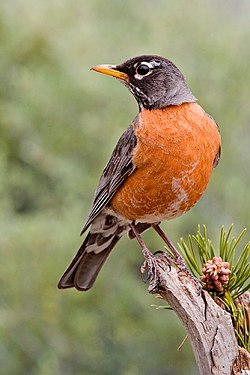
The fauna of Connecticut comprise a variety of animal species.
Contents
- Biodiversity
- Ancient life
- List of native species
- Annelids
- Arthropods
- Mollusks
- See also
- References
- Further reading
- The state bird is the American robin.
- The state insect is the European mantis.
- The state animal is the sperm whale.
- The state shellfish is the eastern oyster.
- The state fish is the American shad.
- The state fossil is the Eubrontes giganteus.
